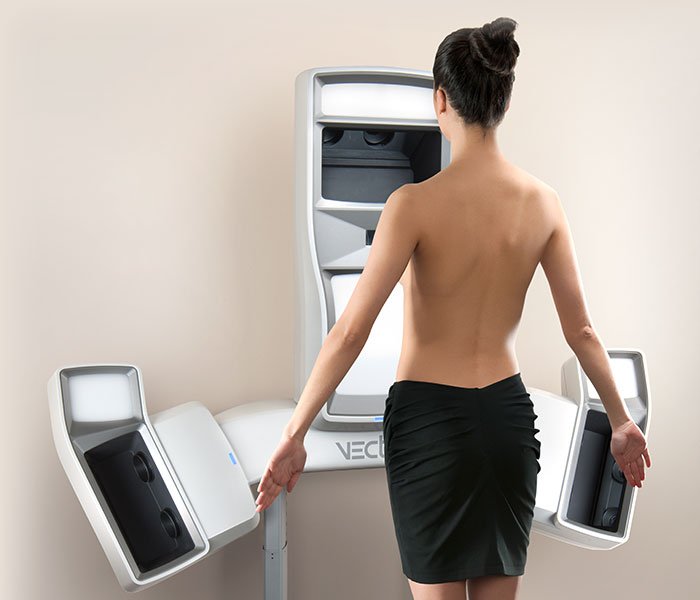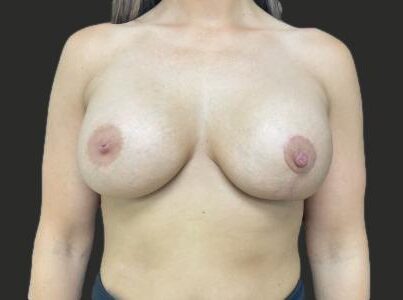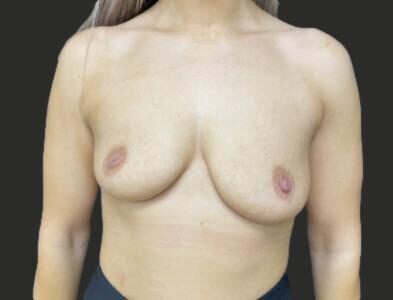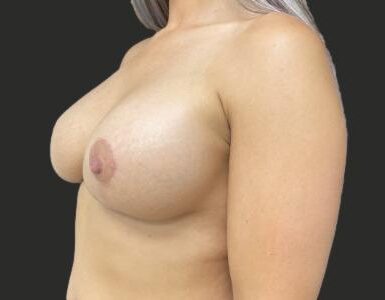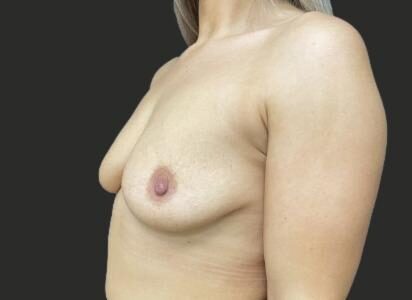Breast Augmentation in Vancouver
Get ready to embrace your new curves and redefine your confidence with the transformative power of breast augmentation. Whether you’re longing for a bold hourglass figure or seeking to restore volume lost due to pregnancy or weight fluctuations, our breast augmentation options are here to help you achieve the silhouette of your dreams. Say hello to enhanced curves, increased confidence, and a newfound sense of empowerment as we guide you through your aesthetic journey at Pacific Plastic Surgery Group.
Before & After
Every patient’s journey is unique, and we are proud to showcase real transformations achieved through personalized care and advanced surgical techniques. Our before and after photos feature actual patients who have consented to share their results, highlighting the natural, individualized outcomes you can expect from our practice.
See Galleries
What is Breast Augmentation?
Breast Augmentation is a surgical procedure performed to add volume to the breasts. Many individuals seek a breast augmentation to improve the shape of their chest for many reasons including to boost body confidence, correct asymmetry or deformity, or to add volume back to breasts that may have become deflated from breastfeeding or weight loss. Breast augmentation is achieved through the use of saline or silicone breast implants, or in certain circumstances with fat transfer.
Types of Breast Implants
Breast implants are chosen based on their texture, size, feel, and profile. At Pacific Plastic Surgery Group we offer both saline and silicone for the breast implant procedure:
Saline Implants
Saline breast implants are filled with a sterile saltwater solution and offer no risk to the patient in terms of extracapsular spread or silicone leakage. Saline implants are appealing to many because they have a greater safety profile. In some patients, a rippling texture may occur along the edges of the breast implant that can be visible in women with lower body fat.
Silicone Implants
Silicone gel implants are filled with a cohesive gel substance that looks and feels similar to natural breast tissue. They are ideal for women who have a low body fat percentage, or minimal breast tissue. Silicone implants are specially engineered so that if the shell becomes compromised (a surface crack or rip), the silicone will remain intact within the implant (known as cohesive gel implants).
VECTRA 3D-photography Simulation
When considering cosmetic breast surgery, one of the big questions for most patients is ‘How will I look after surgery?
At Pacific Plastic Surgery Group, we can take a lot of the guesswork out of your breast enhancement decisions with the Vectra 3-D imaging system.
- Create an accurate 3D image of your body that can be viewed from multiple angles
- Recreate and demonstrate how your body will look with different types and sizes of breast implants
- Simulate your body from multiple different angles and positions with breast implants
- Create before-and-after photos to get a clear idea of the change that will likely take place
Who is a Good Candidate?
Breast augmentation may be a great option if you:
- Are in good physical health and a non-smoker
- Feel your breasts are too small or have lost volume and shape
- Desire fuller, more symmetrical breasts
- Have realistic expectations about the outcome of the procedure
Breast Augmentation Procedure
During a breast augmentation procedure, you are put under general anesthesia. Your plastic surgeon begins by creating an incision in the fold of the skin below the breast. The breast tissue is then elevated away from the rib cage, allowing your surgeon to create a surgical “pocket” under either the breast tissue or muscle. Next, the implant is placed in this pocket before being positioned symmetrically. To finish the surgery, your incisions are sutured closed, and incisions are placed to minimize the appearance of scar tissue.
BEAUTIFUL RESULTS.
PERSONALIZED SERVICE.
Breast Augmentation Recovery and Results
Following breast augmentation surgery, patients can expect a recovery that typically lasts several weeks. Initially, there may be mild discomfort, swelling, and bruising, which can be managed with prescribed pain medication. During the first few days post-surgery, it’s crucial to limit physical activity and follow post-operative care instructions provided by your surgeon. It is also important to wear your surgical compression bra during your recovery to maintain the position of your new breasts. Patients can anticipate fuller, more symmetrical breasts with improved shape and projection, enhancing both their appearance and self-confidence. Over the coming months, the breasts will settle into their natural position, and any residual swelling will dissipate, revealing long-lasting and beautiful results. With proper care and patience during the recovery process, patients can enjoy the full benefits of their breast augmentation for years to come.
Benefits of Breast Augmentation
Breast augmentation can provide numerous benefits, including:
- Enhanced breast volume and shape
- Improved body balance and contour
- Increased confidence and satisfaction with your appearance
- Long-lasting results with modern implant technology
The Surgical Experience
Breast augmentation is performed under general anesthesia in an accredited surgical facility and typically takes 1 – 1.5 hours to complete. It is considered an outpatient procedure. After surgery, patients will need to rest for a couple of days. As the skin adjusts to the new breast size, it is normal to feel tightness or pressure in the chest area. Patients return to work within 7 days, and may resume their normal exercise routines within 4-6 weeks. It typically takes around 3-6 months for the breasts to settle into their final position.
Cost
The cost for breast augmentation surgery can vary with individual requirements or customization of a surgical plan. Please contact us to start the conversation and we’ll be able to give you an estimate of price. A personalized quotation can be provided after a consultation with one of our plastic surgeons.
Frequently Asked Questions
Why might I choose to have breast surgery?
A breast augmentation is a surgical procedure to increase the size and volume of an individual’s breasts using implants. Breast augmentation is one of the most common cosmetic procedures performed today. Our surgeons understand that being happy with the size and shape of your breasts and the contour of your body is very important for your confidence and sense of wellbeing.rnrnA good candidate for a breast augment often has one or more of the following concerns:rnrnUnhappiness with the current breast size.rnA change in breast size and volume following significant weight loss or after having children and breastfeeding.rnAsymmetry between the breasts. Nearly all women naturally have a difference in size between their breasts, but for some women this is much more noticeable than others. This can be corrected using implants in both or just one breast.rnA mastopexy (breast lift) is a surgical procedure that lifts breasts that are drooping to an optimal position on the chest wall. A breast lift can be performed in combination with an augmentation using implants if desired.
How do I choose a size?
Many women ask us “what cup size will I be after the surgery”, or “I would like to be a c-cup”. The difficulty with thinking in terms of cup-size is that it is a very subjective measure, varying widely between individuals and even bra manufacturers. A 36C in one manufacturers bra can be a 34D in another. This is why we prefer to talk about shape and proportion. Our goal is to have breasts that you are happy with and that fit with your individual body size and shape so that your breasts look proportional to the rest of your body.rnrnChoosing the right size and shape of implants is a big decision and one that our patients are understandably anxious about. Your surgeon will work with you to consider your body type, measure your chest width, and understand your desired outcome. At Pacific Plastic Surgery we routinely use sizers to give you an idea of size and proportion and we have the option of using VECTRA 3D imaging. Personalized recommendations will ensure a natural and proportionate look.
How do I try on Sizers during the consultation?
As discussed above, cup-size isn’t the best way to understand how your body will look after surgery. During your consultation we will provide you with some different sizers (a variety of trial breast implants) that you can try on with a bra and clothes. This helps you to appreciate how different sized breast implants will look in relation to the rest of your body. When trying sizers there a few different things to consider, such as your body frame, height, weight, and the width of your shoulders and waist. Women who are taller and have a broader chest and shoulders will likely need a bigger implant to achieve a balanced look than a shorter woman with narrow hips and narrow shoulders. Implant sizes refer to the amount of fluid or gel inside the implant. They can be as small as 125cc and go up from there.rnrnSome important things to remember when considering the best implant size for you:rnrnThere will not be a size that is the perfect fit, rather there will likely be a range of implant sizes that will work and then it is based on your personal preference.rnBigger is not always better and choosing a size that compliments your body size is the best way to prevent you from looking “top heavy” after the procedure.rnSome larger implants may not fit your skin and our surgeon will advise you on whether a chosen implant is feasible for your individual circumstance.
How long is the procedure?
The procedure takes between 1.5 and 2 hours and requires a general anesthetic. The exact procedure will depend on the individual and their specific needs. A small incision is usually made in the crease underneath the breast, (which helps to hide the scar). Sometimes an incision is also made around the areola to move the nipple into a higher position (breast lift/mastopexy). The implant can be placed either under the pectoralis major muscle or on top (a decision made by you and surgeon pre-operatively). Once the optimal position is achieved the opening will be closed. Surgical drains are not used. The sutures (stitches) that are used to close the incisions at the end of the operation are dissolvable and don`t need to be removed.
What should I be doing before surgery?
For smokers, smoking must cease at least 6 weeks prior to surgery and for at least 4 weeks postoperatively.rnAll herbal remedies taken orally must similarly be stopped 6 weeks prior to surgery. Many such herbal remedies have been linked to increased risk of bleeding and many others simply have not been studied well enough to know their effects.rnNo alcohol for 24hrs before your surgeryrnDiscuss with your surgeon whether to take any regular prescribed medication the day of surgeryrnNothing to eat or drink on the day of your surgery from midnightrnNotify our office if you develop a cold or illness before your surgeryrnUse the chlorhexidine scrubbing brush (provided by our office) when showering on the morning of your surgery
What is the recovery from surgery like?
Recovery from breast augmentation occurs gradually and in stages. Immediately after surgery you will likely need 2-5 days off work, depending on the type of work you do. Jobs that involve heavy lifting or physical exertion may require more time off. You can resume light exercise after 2 weeks, and increase to intense exercise after 6 weeks. You should not use swim or submerge your incisions for 3-4 weeks after surgery, so it’s worth considering any vacations or trips when scheduling your surgery date.rnrnFirst night after surgery:rnFollowing surgery, you need to have a caregiver escort you home and stay with you for the first 24-48hrs hours. For patients from out of town we recommend staying in the local area for 3-4 nights after surgery to allow for a post-surgery consultation with the surgeon.rnrnSupport bra:rnYou will be provided with a front-fastening support bra before being discharged home. This is worn continuously for 6 weeks. The use of the support bra will help minimize discomfort, protect the wounds and prevents movement of the implant until it has settled into place and all incisions are completely healed. After 4 weeks if you prefer to use a supportive sports bra that is OK. You should not wear an underwire bra for 6 weeks after surgery.rnrnDressings:rnAt the end of surgery, showerproof dressings are applied that must stay in place until your first post-surgery appointment with the surgeon. If there is some blood or blood/straw colored fluid showing through the dressing this is ok. The dressing can be reinforced with gauze to prevent it from soiling your support bra. These dressings will be removed and replaced at your appointment with the surgeon.
Will I have pain and sickness after surgery?
Pain relief:rnMost patients will experience some pain after their procedure, more so in the first few days after your surgery. The severity of pain experienced varies between individuals based on their tolerance for pain and the surgical technique used. Some women feel little to no pain whereas others will have to manage their pain level using prescription painkillers. Prior to and during surgery you will receive a combination of analgesics (painkillers) and local anesthetics to minimize post-surgery pain. Typically the operation causes minimal to modest pain. This pain can be well controlled with tablet analgesics that will be prescribed before discharge from the surgery centre. Some pain medications can cause constipation so please remember to stay well-hydrated and consider a stool softener to help.rnrnNausea and sickness:rnSome people find that the anesthetic medication used during surgery can cause them to feel nauseous. You can try taking ginger drinks or Gravol tablets from the pharmacy, but if it persists a prescription for stronger anti-sickness medication can be provided. Even if you are feeling sick it is important to keep taking fluids to prevent dehydration and constipation.
When will I be able to resume normal activities?
Showering and bathing:rnShowering can commence the day after surgery as your dressings are showerproof.Do not shower in very hot water, rather use a more moderate water temperature. At the end of the second week it is usually OK to start taking baths, if the surgeon is happy with your healing.rnrnExercise:rnVery light regular daily activities are allowed by day 2 after surgery, but these may be sore initially. Depending on the recovery and the first post-operative visit, you can increase your activity level after the first 2 weeks.You should not do any activity that increases your heart rate above 120 beats per minute for the first 4 weeks. It is important to ‘listen’ to your body: if an activity hurts or causes much discomfort then wait longer. Do not participate in any strenuous activity until 6 weeks after your surgery. This includes: heavy lifting/weight lifting, extreme stretching exercises such as yoga, strenuous sporting activities.rnrnDriving:rnYou must not drive for 48 hours after a general anesthetic. Driving can typically begin again 5-7 days post-surgery.rnrnSleeping:rnMake sure to sleep on your back and prop yourself up with pillows. This will help facilitate getting in and out of bed. Avoid sleeping on your belly or side for 6 weeks following your procedure.rnrnWork:rnReturn to work depends very much on the individual and the type of work activity you perform. Most individuals can return to work in some capacity 1-week post-surgery.rnrnFollow-up:rnFollow-up is tailored to the individual case but typically occurs, 1-2 weeks post-surgery, 4-6 weeks, and 3-6 months post surgery.
Will I have scars?
Scars:rnScarring after breast augmentation and mastopexy surgery is permanent. Your surgeon will however place the incision in low visibility areas, typically under the breast fold. If a breast lift is also required there is additional scarring around the areola. We will provide you with a scar-minimizing silicone gel to use after surgery and the surgeon will explain how to gently massage the incision lines to minimize scarring. It is important to not expose your incision lines to the sun for the first 6 months as the sunlight can prevent the scars from fading. If you are tanning then cover your incision lines with a high-factor sunscreen (factor 60 or greater).rnrnImplant Settling:rnImmediately after your surgery it is very normal for the breasts to feel hard and to sit in a very high position on the chest. Over the course of 6-12 weeks after your surgery your implants will ‘settle’ into the optimal position on your chest.rnrnSmoking:rnSmoking should be avoided in the first 6 weeks after surgery. Smoking significantly increases the risk of complications such as infection and delayed healing. Even more seriously it can cause skin death (necrosis), including nipple necrosis!
What are the potential early complications?
Hematoma: a collection of blood trapped within the breast affecting 1-2 % of cases.rnrnInfection: very rare, less than 1% of cases.rnrnDecrease or increase in sensitivity of the nipple. 15% of patients may experience this, typically temporary in nature.rnrnNecrosis (loss) of the nipple: a very rare risk of augmentation-mastopexy procedures.rnrnDelayed healing: incisions that take several weeks to heal rather than the normal 1-2 weeks. Seen occasionally with augmentation-mastopexy procedures.rnrnAsymmetry/Unevenness of the breasts: typically associated with patients who have pre-operative asymmetry.rnrnDeep vein thrombosis/Pulmonary embolus: blood clots in the leg and lung respectively.
What are the potential long-term complications?
Implant rupture: 1% of implants per year can rupturernrnCapsular contracture (excess scar tissue around the implant): leads to hardening and discomfort of the breast. 1% of implants per year effected.rnrnRippling of skin around implant (more problematic with large implants)rnrnMalposition of implant: implants moving out of their original position (much more common with large implants)rnrnALCL: a rare form of lymphoma associated with textured breast implants affecting up to 1 in 3,000 textured implants. Our surgeons never use textured implants and this complication is listed here in the interests of being comprehensive.rnrnRe-operation: approximately 20% of all patients who have had cosmetic breast surgery have a further breast surgery within 10 years of their original surgery. Reasons for re-operation include complications such as capsular contracture, rupture, malposition as well as patient choice e.g. change of implant size, breast lift required as the breast ages and droops.rnrnHypertrophic/keloid scar formation: thick, lumpy, itchy scars. Uncommon.
Are breast implants safe and what are the potential risks?
Breast implants are considered safe, but they come with potential risks. Previously there was an implant that was found to cause some problems and was link to BIA-ALCL (Breast implant-associated anaplastic large cell lymphoma) however this product has since been removed from the Canadian market. Common risks for breast implants include implant rupture, capsular contracture (scar tissue formation), infection, and changes in nipple or breast sensation. It’s important to discuss these risks thoroughly with your Pacific Plastic Surgery Group plastic surgeon and consider regular follow-ups to monitor the implants.
How long do breast implants last before they need to be replaced?
Historically it’s been recommended to replace breast implants at around the 10 year mark, but more modern implants have lasted longer and they don’t have a definitive expiration date. Many people may need to replace them sooner due to complications such as rupture, capsular contracture, or changes in aesthetic preferences. Regular check-ups with your Pacific Plastic Surgery Group surgeon are important to monitor the condition of your implants and we typically recommend annual visits to our clinic.
What types of breast implants are available?
Advancements in breast augmentation technology have brought about more nuanced choices beyond just the type of implant material (saline or silicone). Two significant factors that can now be considered are the firmness of silicone implants and the profile (or projection) of the implants. Let’s delve into these:rnrnFirmness of silicone implants: Silicone implants now come in different levels of firmness or cohesiveness of the silicone gel. This can affect how the implant feels and behaves within the breast. Some feel that the firmer silicone can provide more shape retention and stability, potentially reducing the risk of rippling and maintaining a more predictable shape over time.rnrnProfile or projection of implants: This refers to how much the implants project forward from the chest wall. Implants are available in different profiles, such as low profile (less projection), moderate profile, high profile, and even ultra-high profile. The choice of profile depends on factors like body shape, chest width, and desired breast size and shape. A higher profile implant may provide more projection and fullness in the upper part of the breast, while a lower profile implant may offer a more subtle augmentation.rnrnWhile the many choices may seem overwhelming, they enable a more personalized approach. Your Pacific Plastic Surgery Group surgeon will work with you to understand your goals and make suggestions for implants that will best suit your body shape and meet your needs.
Contact Vancouver’s leading plastic surgery group.
At Pacific Plastic Surgery Group, we are passionate about providing high-quality, individualized care tailored to each patient’s needs. Our experienced, board-certified plastic surgeons take a thoughtful, patient-centered approach to every breast augmentation procedure. We emphasize clear communication and will work hand-in-hand with you to design a personalized plan that aligns with your aesthetic goals and enhances your natural beauty.
Schedule a Consultation
To learn more about breast augmentation and other procedures offered at Pacific Plastic Surgery Group, schedule a consultation by filling out our online contact form. Pacific Plastic Surgery Group services the Vancouver area.
Request a Consultation
You deserve the best solutions to achieve your positive body image. Consult with top plastic surgeons in Vancouver and rest of BC.
